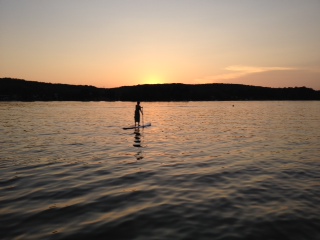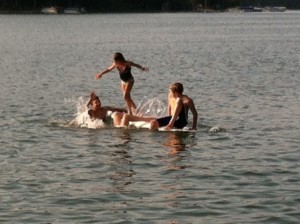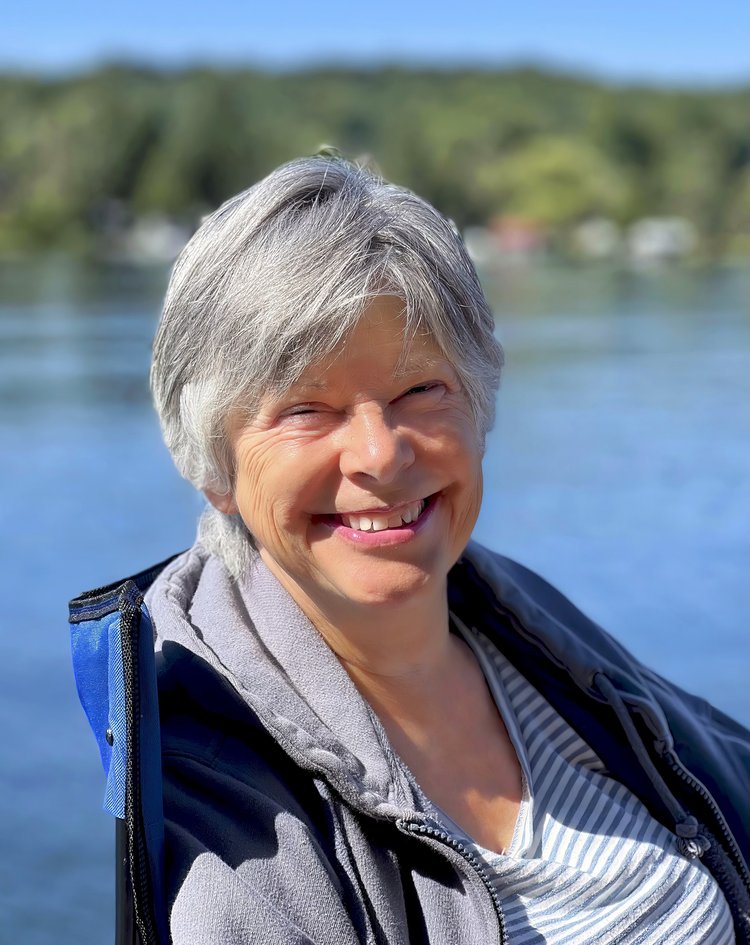 I love my stand-up paddleboard. I learned from my friend Anne-Marie to wrap a sarong-like scarf around my bathing suit so that I look like a native woman, off to spear a few fish for breakfast. Well, something like that. Our lake is quiet enough in the mornings and evening after sunset so that I don’t have to buck waves or motorboat wakes. I’m not terribly secure when things begin rocking, but I’ve managed to stay on so far.The view from up there, standing, is different. I can’t explain how. You’re walking on water, sort of. You’re sliding over the surface, upright, with your paddle, and you feel like Queen of the World. You move very slowly, but silently, except for the slight slap-slap of tiny waves against the board.Which makes me think of the book my daughter gave me as part of my birthday present. It’s a New York Times bestseller called Quiet: the Power of Introverts in a World that Can’t Stop Talking, by Susan Cain. My daughter likes to talk. She’s very social, makes many friends wherever she goes, and is energized and thrives on being with people. I am, well, I’m not too fond of labels, but you’d call me an introvert. I try to hide it. I’ve always wanted to be the kind of person who has a rich inner life but can flip a switch and be life of the party. I want to be alone a lot. I am always thinking and not talking much. I have to drag words out of my mouth, think hard what I could contribute, just to keep from being a total bore and letting all conversation die completely.Cain’s book is a bit “pop,” (She's been in "O" and Psychology Today) but I appreciate the science, the 1000 plus studies she references, that offer incontrovertible evidence extroverts and introverts (as she labels them) have bodies that behave physiologically different. From birth. An introvert is highly reactive, exhausted by being around people; an extrovert less reactive, energized by interaction. Cain uses brain scan patterns, eye dilation, skin reactions, and so on to show how different the groups are. She says, I think, that 20% of all animal populations appear to be introverts. The group needs them. They’re the ones who hold back and think things through. She uses Eleanor and Franklin Roosevelt as a splendid pairing: he was the actor, the politician; she was the “conscience,” as Cain puts it. Even after she discovered his long-standing affair with Lucy Mercer, they continued to work together well.I know what this book is designed to do—get you to buy it so you’ll feel better about being an introvert. It may have worked. I feel at the moment less driven to say something, for God’s sake, when all I really want to do is be quiet.I’ve been teaching a lot of years. I can crank it out in front of a classroom. I can pull forward whatever extroverted traits I have and be effective. It takes a tremendous amount of energy, more now that I’m older. I like it when it goes well. I’m deeply gratified when students are catching on and getting into it. But it is, for me, an unnatural act, this standing in front and revving up the energy by my presence.I am the one on the stand-up paddleboard, alone in the lake, moving silently through the water, alone with my thoughts or no thoughts.
I love my stand-up paddleboard. I learned from my friend Anne-Marie to wrap a sarong-like scarf around my bathing suit so that I look like a native woman, off to spear a few fish for breakfast. Well, something like that. Our lake is quiet enough in the mornings and evening after sunset so that I don’t have to buck waves or motorboat wakes. I’m not terribly secure when things begin rocking, but I’ve managed to stay on so far.The view from up there, standing, is different. I can’t explain how. You’re walking on water, sort of. You’re sliding over the surface, upright, with your paddle, and you feel like Queen of the World. You move very slowly, but silently, except for the slight slap-slap of tiny waves against the board.Which makes me think of the book my daughter gave me as part of my birthday present. It’s a New York Times bestseller called Quiet: the Power of Introverts in a World that Can’t Stop Talking, by Susan Cain. My daughter likes to talk. She’s very social, makes many friends wherever she goes, and is energized and thrives on being with people. I am, well, I’m not too fond of labels, but you’d call me an introvert. I try to hide it. I’ve always wanted to be the kind of person who has a rich inner life but can flip a switch and be life of the party. I want to be alone a lot. I am always thinking and not talking much. I have to drag words out of my mouth, think hard what I could contribute, just to keep from being a total bore and letting all conversation die completely.Cain’s book is a bit “pop,” (She's been in "O" and Psychology Today) but I appreciate the science, the 1000 plus studies she references, that offer incontrovertible evidence extroverts and introverts (as she labels them) have bodies that behave physiologically different. From birth. An introvert is highly reactive, exhausted by being around people; an extrovert less reactive, energized by interaction. Cain uses brain scan patterns, eye dilation, skin reactions, and so on to show how different the groups are. She says, I think, that 20% of all animal populations appear to be introverts. The group needs them. They’re the ones who hold back and think things through. She uses Eleanor and Franklin Roosevelt as a splendid pairing: he was the actor, the politician; she was the “conscience,” as Cain puts it. Even after she discovered his long-standing affair with Lucy Mercer, they continued to work together well.I know what this book is designed to do—get you to buy it so you’ll feel better about being an introvert. It may have worked. I feel at the moment less driven to say something, for God’s sake, when all I really want to do is be quiet.I’ve been teaching a lot of years. I can crank it out in front of a classroom. I can pull forward whatever extroverted traits I have and be effective. It takes a tremendous amount of energy, more now that I’m older. I like it when it goes well. I’m deeply gratified when students are catching on and getting into it. But it is, for me, an unnatural act, this standing in front and revving up the energy by my presence.I am the one on the stand-up paddleboard, alone in the lake, moving silently through the water, alone with my thoughts or no thoughts. On the other hand, here is a photo of some of my grandchildren on my paddleboard. They have yet to sort themselves into categories. A few feel awkward, tongue-tied; others are bold and easy with people. But they all love the paddleboard.
On the other hand, here is a photo of some of my grandchildren on my paddleboard. They have yet to sort themselves into categories. A few feel awkward, tongue-tied; others are bold and easy with people. But they all love the paddleboard.
My Versatile Stand-Up Paddleboard
in Archive
